Alternaria Learn more about Alternaria
-
Control methods of Ganoderma lucidum Alternaria

Control methods of Ganoderma lucidum Alternaria
2018-07-05 -
The latest control methods of Streptomyces lucidum

Streptomyces, also known as Alternaria oryzae, Saccharomyces cerevisiae, etc., the hyphae are transparent, branched, multi-septum, and loose, reticulate. The conidiophores grow from the hyphae and produce conidia at the top of the conidiophores. The main species are Alternaria oranges and rough chains.
2020-11-10 The latest Ganoderma lucidum Alternaria molds control methods chain bubbles also known as -
Harm and Control of Streptomyces in Lentinus edodes

Alternaria was fluffy, white or gray at the initial stage of growth, and pink and yellow at the later stage of growth. When a large number of conidia are integrated, the appearance is similar to that of hericium Erinaceus. Streptomyces is mainly caused by conidia and is the most important miscellaneous bacteria in high temperature season. The mycelium of Streptomyces is tenacious and powerful and has the characteristic of rapid propagation. once it occurs, it will be wiped out, and the result will be scrapped in batches of bacteria, culture bags or culture blocks. In order to control Alternaria, we should try our best to avoid production in high temperature season. The temperature is at the stage of Lentinus edodes growing.
2019-01-16 -
Harm and Control of Common miscellaneous bacteria in Edible Fungi

First, Alternaria. Also known as Neurospora. The asexual stage belongs to Trichoderma, Chlamydomonaceae; the sexual stage is a kind of ascomycetes. Pleurotus ostreatus is harmful to Alternaria crassa and Alternaria alternata. Hyphae white, lax, branched and septate. The conidiophores are bifurcated. Conidia series, globose to ovoid, orange or pink. Vesicles fascicled or scattered, subglobose or ovate. The ascus is cylindrical and contains 8 ascospores. Alternaria is widely distributed and can be spread in air, soil, rotten plants, grains and so on. The culture material is too wet and
2019-01-16 -
Control methods of Alternaria leaf spot in cockscomb

Damaging plants: celosiacristatal. Distribution and harm: the disease mainly occurs in Zhejiang, Yunnan and other places, the harm is serious. Symptoms: there are round, oval, irregular dark brown spots on the front of the leaf. The initial lesion is a small dot, the center is white, and the outer ring is brown.
2018-12-18 -
Ganoderma lucidum planting method: how to cultivate Ganoderma lucidum? How to prevent and cure Alternaria lucidum
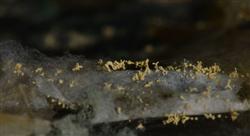
How does Ganoderma lucidum control Alternaria? Please introduce the harm of Ganoderma lucidum Streptomyces: Ganoderma lucidum is also called Neurospora or Rhizoctonia, Bread Mould, Neurospora, Candida albicans. It belongs to the subphylum ascomycetes, Chlamydia faecalis and Neurospora. It is a kind of miscellaneous bacteria which is very threatening in the production of edible fungi of Ganoderma lucidum. Happen.
2018-09-07 -
Disease Ganoderma lucidum Alternaria

Streptomyces is known as NeurosporasitophilaSh.etDodge, also known as Neurospora or Erythromycosis, Bread Mould, Neurospora, and Candida albicans. It belongs to the subphylum ascomycetes, Chlamydia faecalis and Neurospora. It is a kind of miscellaneous bacteria which is very threatening in the production of edible fungi of Ganoderma lucidum. It occurs and spreads quickly. After the original species of the symptom is damaged, a fleshy to red conidia pile is formed on the outside of the cotton plug, which surrounds the whole mouth of the bottle, and the spread of pollination occurs at the slightest touch.
2019-01-15 -
Safety Prevention and Control Technology of Edible Fungi Diseases, insect pests and Weeds

Safety Prevention and Control Technology of Edible Fungi Diseases, insect pests and Weeds
2018-07-09 -
How to control verrucosporium of Pleurotus ostreatus
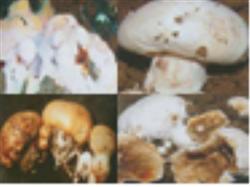
Disease symptoms verrucosporium disease, also known as brown rot, white rot, wet bubble disease, blister disease, the disease is caused by a pathogen called verrucosporium. Alternaria verrucosa is a kind of soil fungus. In the cultivation of Pleurotus ostreatus, Alternaria verrucosa is mainly introduced into the mushroom room with the covered soil, which occurs in the mushroom shed with high temperature, high humidity and poor ventilation.
2018-09-11 -
Control of common diseases and insect pests of Lentinus edodes

In the process of Lentinus edodes production, it is often harmed by diseases and pests. If the prevention and control is unfavorable, it will make the cultivation of Lentinus edodes fall into a vicious circle. If it is light, it will reduce the yield, and if it is serious, the cultivation will fail. Therefore, great attention must be paid to it. Trichoderma, also known as green mold, is widely distributed in a variety of plant residues, soil and air. Trichoderma spreads by spores and invades the culture medium with the aid of airflow, water droplets, insects, raw materials, tools, hands and clothes of operators, and germinates and propagates as soon as the conditions are suitable. When the production environment is not clean and the culture material
2019-01-16 -
How to prevent and control edible fungus diseases, insect pests and weeds?
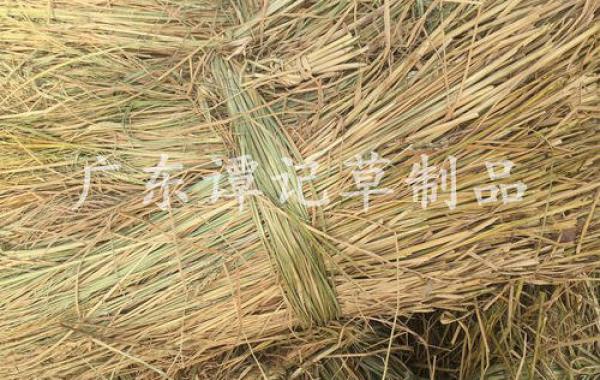
How to prevent and control edible fungus diseases, insect pests and weeds?
2020-10-30 -
Ganoderma lucidum disease: Neurospora

Neuropara is also known as Candida albicans, Alternaria alternata, and red bread mold. It belongs to the subphylum ascomycetes, ascomycetes, Chlamydia faecalis, Chlamydia faecalis. The asexual generation is semi-known subphylum, Trichospora, Trichospora, Trichosporaceae, Monilia. The main harmful species is Alternaria alternata (N.sitophilaShearetDodge). 1. The morphological characteristics are that the ascomycetes in the sexual stage are clustered or scattered on the surface or inner layer of the matrix. Mature apothecium dark brown
2019-01-15 -
Tremella cultivation: what are the diseases and insect pests in Tremella cultivation?

What are the diseases and insect pests in Tremella cultivation? How to control the diseases and insect pests of Tremella fuciformis? Please give guidance to Tremella cultivation common diseases are Alternaria, green Trichoderma, white rot, Monascus, Mucor, Rhizopus, Penicillium; common pests of Tremella include mites, mushroom mosquitoes, nematodes; the following details of its harm and control methods. 1 、...
2018-07-17 -
Brown spot disease of primrose and its control

The symptom of primrose brown spot disease: it often occurs in the four seasons. It is caused by Alternaria of the subphylum Alternaria. There are brown spots on the leaves of infected plants. The route of transmission is that conidia are transmitted by wind and rain. Prevention and treatment: spray 70% chlorothalonil wettable powder 1000 times liquid and other fungicides at the initial stage of the disease.
2019-01-16 -
Common diseases and control of primroses

Teacher Hsiao Huizi now introduces the common diseases of primrose as follows
2018-10-26 -
Prevention and treatment of common diseases of primroses

Primroses sowing from that moment, not only to do a good job of maintenance and management, disease and pest prevention is also one of the keys to raising primroses, once there is a small problem in a certain procedure, primroses will also play a small mood, so that you are busy without a clue. So what are the common diseases and pests of primroses in the process of culture?
2018-07-01 -
Miscellaneous bacteria harming Pleurotus ostreatus and its control
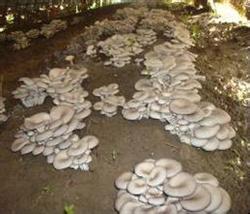
The first and middle of August is the golden period of cultivating Pleurotus ostreatus in early autumn. using fermentation material to cultivate Pleurotus ostreatus is one of the important technical measures to improve the yield and benefit of Pleurotus ostreatus. However, many mushroom farmers failed because of the unscientific preparation of culture materials. The correct preparation method of Pleurotus ostreatus culture material is as follows: first, adopt a reasonable formula. Mushroom...
2018-09-09 -
Ring disease of geranium

Geranium ring disease is a common leaf disease of geranium. It has a wide host range and can damage a variety of woody and herbaceous flowers, seriously affecting ornamental plants. Symptoms: at the initial stage of the disease, green spots appear on the susceptible leaves, and then the spots gradually expand, forming a larger round spot. The disease spot is dark brown and has concentric rings. In the later stage of the disease, a black-green mold layer appeared on the disease spot, which was the conidia of the pathogen. Pathogen: the pathogen is Alternaria alternata (AlternariatennuisNees).
2019-01-16 -
Pleurotus ostreatus disease

Excuse me, why does the late growth of Pleurotus ostreatus have some small white bumps? There are many black varieties, but gray and white varieties rarely occur. The same planting methods and culture materials. Why did this happen? How to prevent and cure such miscellaneous bacteria? All aspects of Pleurotus ostreatus production may be contaminated by miscellaneous bacteria and must be prevented in time. The common miscellaneous bacteria are mainly as follows: (1) most of the bacteria occur on the slope of the mother species, and the harm of the original species and cultivated species is relatively mild. Bacterial contamination is characterized by rapid reproduction, usually 10 to 24 hours after inoculation.
2019-01-16 -
Ganoderma lucidum planting technology: what is Ganoderma lucidum Streptomyces?
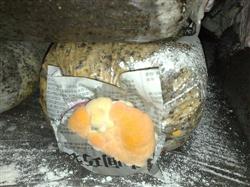
What is Ganoderma lucidum Alternaria? What is the harm of Streptomyces to Ganoderma lucidum? How to prevent and cure Streptomyces, also known as Neurospora or Erythromycosis, Bread Mould, Neurospora, Candida albicans. It belongs to the subphylum ascomycetes, Chlamydia faecalis and Neurospora. It is a threat in the production of Ganoderma lucidum edible fungi.
2018-07-17
